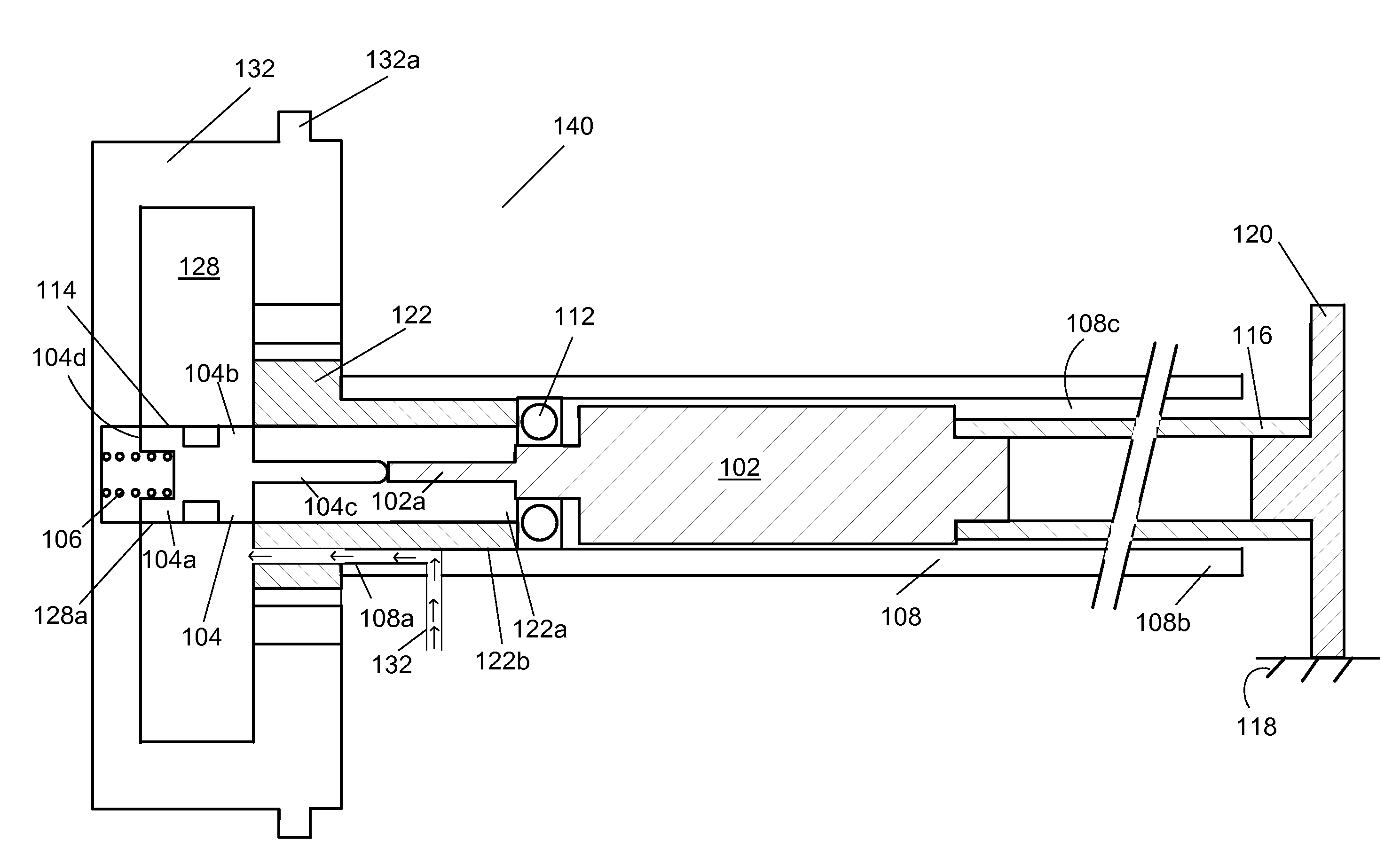Variable cam timing controls mounted in the camshaft
a cam timing and control technology, applied in the direction of valve details, valve arrangements, valve drives, etc., can solve the problems of increasing the length of the valvetrain and increasing the engine siz
- Summary
- Abstract
- Description
- Claims
- Application Information
AI Technical Summary
Problems solved by technology
Method used
Image
Examples
Embodiment Construction
[0013]FIG. 1 shows a drawing of the timing controls for a variable cam timing mechanism mounted within the camshaft. The VCT mechanism may use one or more “vane phasers” on the engine camshaft (or camshafts, in a multiple-camshaft engine). In most cases, the phaser has a rotor 128 with one or more vanes, mounted to a first end 108a of the camshaft 108, and surrounded by a housing 132 forming a chamber between the rotor and the housing in which the vanes (not shown) fit. The housing 132 of the VCT mechanism 140 includes teeth 132a for accepting drive force through a chain, usually from the crankshaft (not shown), or possibly from another camshaft in a multiple-cam engine. The flange 122 received by the housing 132 is mounted on the camshaft 108.
[0014]A control valve 114 is present in the rotor 128. The position of the control valve 114 is altered by the control valve actuator or variable force solenoid 102. The control valve 114 controls the flow of fluid to the vanes, which move and...
PUM
 Login to View More
Login to View More Abstract
Description
Claims
Application Information
 Login to View More
Login to View More - R&D
- Intellectual Property
- Life Sciences
- Materials
- Tech Scout
- Unparalleled Data Quality
- Higher Quality Content
- 60% Fewer Hallucinations
Browse by: Latest US Patents, China's latest patents, Technical Efficacy Thesaurus, Application Domain, Technology Topic, Popular Technical Reports.
© 2025 PatSnap. All rights reserved.Legal|Privacy policy|Modern Slavery Act Transparency Statement|Sitemap|About US| Contact US: help@patsnap.com



